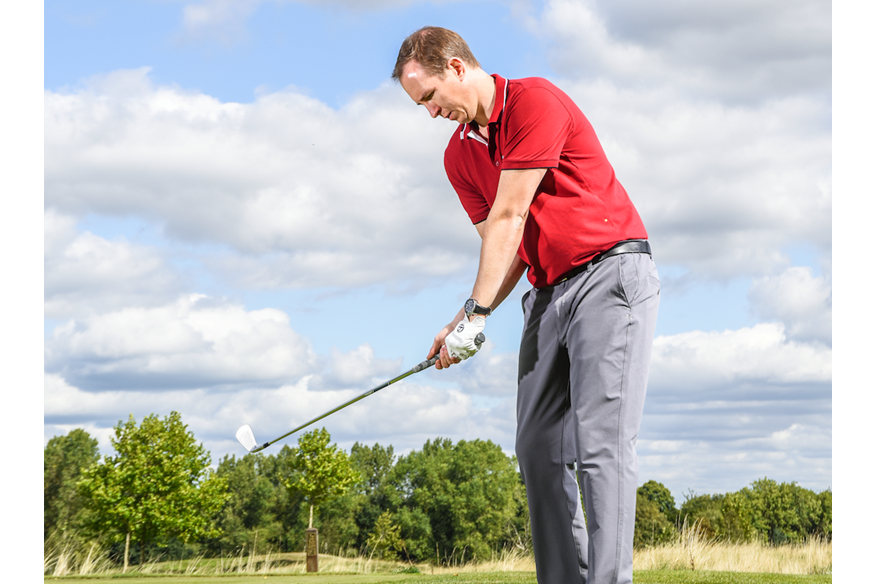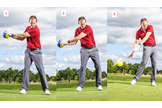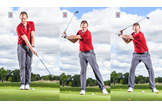Beat your over-the-top swing
Published:
Two drills to help you improve your ‘over the top’ technique
We are learning how improved physical conditioning can improve your technique. This month we turn to the bane of club golfers everywhere… ‘over the top’.
This classic out-and-over move from the top of the backswing, which sees the club attack the ball from out-to-in, typically matches with an open face to produce that hated slice. But simply by working on your mobility, you can forge a more effective move. Here’s how.
This tip comes from TG Top 50 coach Ben Emerson, Head PGA Professional at Bowood Resort and Advanced TP I Golf Instructor.
Where does over-the top come from?
Over-the-top is usually the result of overuse or over-dominance of the upper body during the downswing. When your upper half dominates your more passive lower body, the club is typically thrown outside the intended swing plane and the club is forced to attack the ball from out-to-in.
Physical limitations
Over-the-top can be linked to a golfer’s inability to work their lower half independently from the upper half – something that’s often called ‘separation’. To beat ‘over-the-top’ you need to wake up and mobilise your body from the waist down. Here are two drills that will help you.
Drill 1: Ball Throw
Get your lower half more active at the change of direction… and build the feeling of separation:
#1: Swing back and hold
For this drill you need some kind of ball – a football is ideal. Hold the ball with your palms facing each other, and take your regular stance. Now swing slowly back until your lead arm is parallel to the ground and hold the position.
#2: Split Second
From here feel your arms and the ball hold their position, just for a second or so, while you let your lower body lead the change of direction. Allow weight to shift back into your lead foot, and your hips to begin their rotation.
#3: Happy Release
After holding that position for a second, let it go and continue with your hip rotation. But as you do, throw the ball straight down into the ground; it should bounce behind the outside of your trail foot. That intention helps prevent your shoulders simply opening out with the hips, and preserves your feeling of upper/lower-half separation
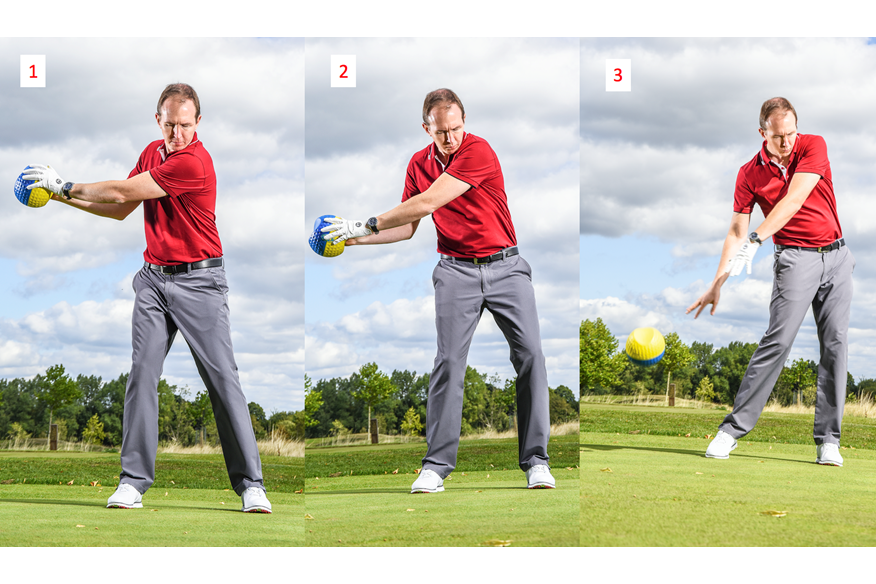
Better Path, More Power: Keep working on this drill and you will start to develop a feeling for your hips and lower body leading the downswing, and your arms and shoulders following. This will help train a better path for the downswing, as well as a more powerful movement sequence.
Drill 2: Step Change
A full-speed drill that adds dynamism to your ability to separate upper and lower body:
#1: Head Start
Take your 6-iron, and a regular stance. But just before you swing the club away, bring your lead foot across and next to your trail foot. The ball should now be just outside your lead foot. Swing the club forward, over and past the ball; you will begin your swing from here.
#2: Trial Separation
Swoop the club back, over the ball. But as soon as it passes your legs and begins to gain momentum, begin to step forward with your lead foot. Plant it in its regular position. You are creating a situation where the club is going back while your lower body is moving forward… which will help you feel and train separation.
#3: Power Stretch
Continue with that feeling of the lower body moving towards the target and the upper body swinging away from it. Done at speed, you will begin to create a powerfully stretched feeling at the top with your lower body – weight shifting and hips rotating – already leading the downswing.
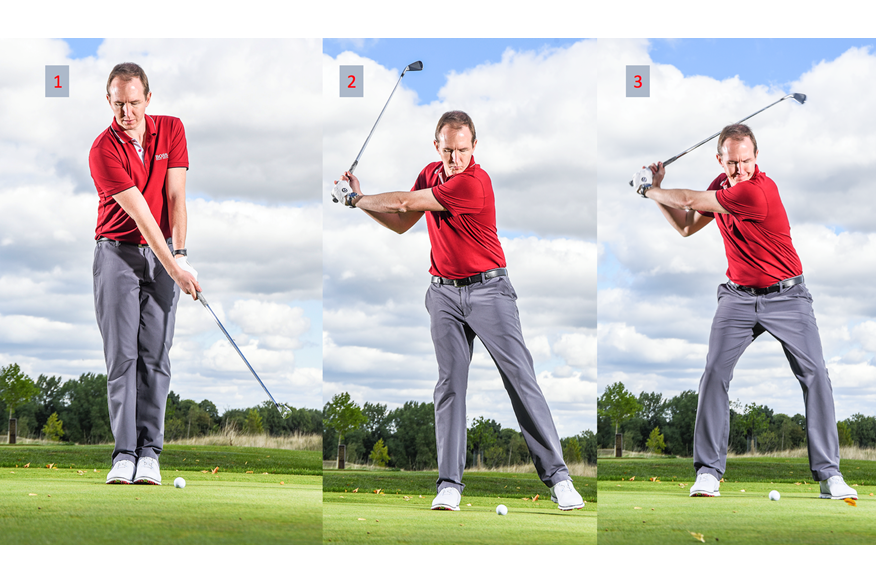
New Order: This drill works by helping you feel the all-important sequencing that allows your body segments to work in the right order on the way down. Work on this feeling of the lower body leading your upper half and you will find yourself able to deliver the club from a neutral or even inside attack path… and leave over-the-top behind for good.
